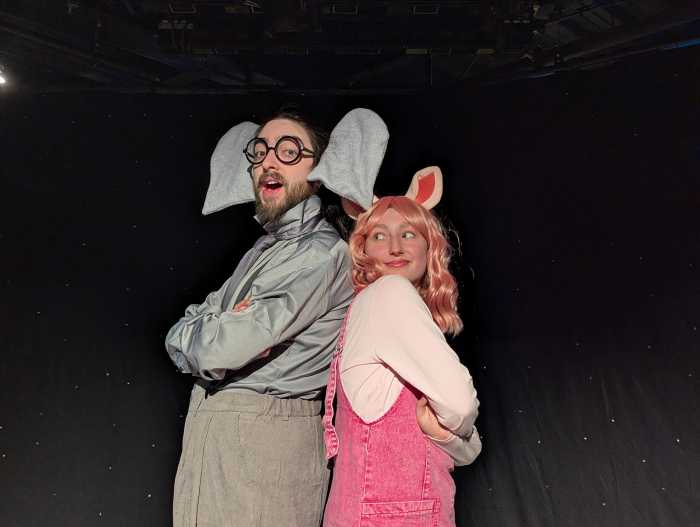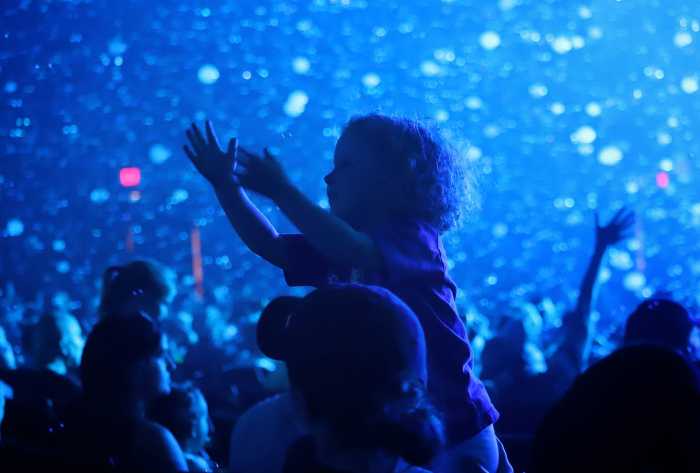
Photo by Christine Watley
New York Family’s Parent’s Book Club’s October Pick is The Last House Guest by Megan Miranda. The Last House Guest is about two girls form an unlikely friendship in Littleport, Maine. Each summer for almost a decade, the girls are inseparable — until Sadie is found dead. While the police rule the death a suicide, Avery can’t help but feel there are those in the community, including a local detective and Sadie’s brother, Parker, who blame her. Someone knows more than they’re saying, and Avery is intent on clearing her name, before the facts get twisted against her. We caught up with Megan Miranda to discuss The Last House Guest, her career, money and power, people and place, motherhood, and more!
Megan Miranda is the New York Times best-selling author of All the Missing Girls. She has also written several books for young adults, including The Safest Lies, Fragments of the Lost, and Come Find Me. She grew up in New Jersey, graduated from MIT, and lives in North Carolina with her husband and two children. The Perfect Stranger is her second novel of psychological suspense and The Last House Guest is the latest.
Twitter: @MeganLMiranda
Website: meganmiranda.com

What was your inspiration for writing The Last House Guest and what do you hope readers take away from the novel?
I am usually someone who starts with character, but this time I was inspired partly by setting. I wanted to set the story in a town that could be viewed from two different perspectives, so both from an insider who lived there year-round, but also as an outsider who maybe only sees the surface of it and is somebody who visits in the summer. The characters of Avery and Sadie grew from that idea. And I knew I wanted to set it in Maine, which was where my dad grew up. We used to take trips up the coast every summer, and we’d stay in Pearl Harbor, so that was the inspiration for the setting. But it became something much more from there. It is a mystery at the heart, but I think it’s really about this very unusual and intense friendship between Avery and Sadie. For me, it’s also a story about Avery’s resiliency.
What draws you to this particular theme of thrill and mystery? Did you know that you always wanted to write in this genre?
I grew up reading mysteries and thrillers. I think I started with Nancy Drew, and my mom was a big thriller reader, so that’s what was on our shelves. It’s my favorite genre to read; I like to try to figure out the mystery. As a writer, that’s my favorite part too: to try to figure out what the puzzle pieces are and create the mysteries. I think I always knew that this was the genre that I wanted to be in.
(Spoiler Alert!) Did you know from the start that the Detective was going to be the killer?
Yes and no. I rewrote this book at least three or four times. When I started, I knew his role and backstory from the start. I knew the role he played in Avery’s history, and I knew that that was going to come back into play. I did not know the present mystery until I worked my way into it. And I never know the ends when I start. I have to get to know the characters and figure out their relationships and motivations. I knew he had made this mistake and then by halfway through I was like, oh no…he did it.
In your opinion, what’s the relationship between people and place? Do you think the place shapes us or do we shape the place?
I love that question for many reasons, because when I started, I very much wanted the characters to be a part of the place and to feel like a product of the place in one way or another. When I started the book, one of the first lines I wrote in the earlier section is when Avery’s describing the town and she says “It’s a town carved out from the untouched wild, mountains on one side, ocean on the other. It exists in pure stubbornness, pushing back against nature” and then she says, “growing up here makes you feel as if you’re forged from the same character.” That’s when I got a sense of who Avery was and how she feels very formulated by this place. So I think it’s a little bit of both. The people definitely make the town, but they also take their identity from it. One of the themes I’m drawn to over and over is identity: how we’re viewed and how the past shapes us. In the book, the characters feel like they’re a product of this place, but in effect, they also shape what this place is.
A running theme in the novel is the connection between money and power. What drew you to explore this theme?
I’m always drawn to certain themes when I start. I think of themes as a question to explore without necessarily an answer. For this one, when I set up the friendship dynamic and the dynamic of the town, there was just an inherent power imbalance from the start, of people who had means and people who didn’t. I started to think a lot about what gives someone power, and that became a running theme. Is it money? Is it what you know? Is it what you’re willing to do? Is it taking that risk? How do people get power, what are they willing to do with it? I also wanted to explore the subtle shifts of power dynamics in relationships, between every set of characters. That was something that just grew as I wrote.
Was writing this very strong and relatable female protagonist, Avery, central to the novel? Was this something you were consciously thinking about as you were writing?
Yes and no. I spend so much time in a character’s head, and I do feel like when I’m following a story, it’s not necessarily the plot, but the character. All of my characters have a certain resiliency: they’re flawed characters and they do the wrong thing sometimes or they have tumultuous pasts, but for me, it’s very important to see them make it through the other side. They are going to kind of find the strength that they always had but maybe didn’t know it. And in Avery’s case, she was always somebody who was bold and willing to take the risks, but for very different reasons. She was left with very little and had to kind of claw her way back to what she wanted. It was intentional, but also something that felt natural as it progressed.
What is the role of a book cover? What should it do for a book?
I love that, because I think a book cover’s role is to capture the feeling of a story. It tells you what type of book it is. I did not design the covers for my books at all, and I think they just nailed it. They nailed the atmosphere. And in this case, what I love so much about it is that not only it has the setting of Littleport through the window with the rain on it, but I think it plays with perspective a lot, which was what I set out with. There are words inside the window and words outside the window, and then as you’re looking through a window and to a house, you’re wondering who’s the watcher and who’s being watched. I think the cover should ask a question and feel dynamic in some way like that.
When you’re not writing, what else do you like to do in your free time?
I have two kids who are 13 and 11, so I hang out with them a lot. They’re with me right now on this leg of the tour, so basically that’s what I’m doing. I’m hanging out with my kids, doing kid stuff with them. I love to go to the beach too. I’m at the Jersey Shore right now.
What advice do you have for mothers in navigating that balance between career, passion, motherhood?
Like you said, it’s always a balance, and sometimes there’s different things that take priority at different times. For me, it was important never to try to force something. I wrote at first when my kids were sleeping, and then I wrote when they were at school. Sometimes I have to shift to do more parenting as opposed to writing, and sometimes, like right now, it’s shifting the other way. I think there’s no one answer and no one right way: it’s sort of just whatever works for you and your family.
Where do you do most of your writing?
I have an office in my house that helps me keep the boundaries between my writing life and my home life, so I try to do all of my research and writing there. I go into my office, close the door, and leave my laptop there at the end of the day when the school bus comes home. I try to leave all that behind, especially because I’m researching a lot of dark things, and it really helps to set that boundary of, okay that’s my work and the story side, and now this is my real life with my family.
Rumor has it that we’re expecting two more thrillers in 2021 and 2022, and a book called The Girl from Widow Hills in 2020. I know you probably can give much away, but…
Yes, because I’m still working on it, and my drafts tend to change very dramatically. When I was touring for The Perfect Stranger, I was giving the pitch for this book, and I swear those people are probably like, that is not at all what this book is. But I am writing more adult thrillers.
What is your book recommendation of 2019 or upcoming in 2020?
There were two books I read earlier this year that really stuck with me that are psychological suspense. One is called The Winter Sister by Megan Collins, and then there’s The Night Before by Wendy Walker. It’s told in two different timelines. There are two sisters and one of them meets someone on a dating app, but does not return from her date. The story is on that day, and then it also is her sister trying to find her, so it’s two time lines convoluted. Those are my two recommendations right now, but I have many.
Another theme that I see both in The Perfect Stranger and The Last House Guest is that unsettling feeling how we don’t really know people as well as we think we do. What draws you to this theme?
It’s the core mystery sometimes: the mysteries inside other people. That’s the theme I’m drawn to over and over again, not only in other people, but in ourselves. I moved to North Carolina as an adult, and it made me think a lot about when you meet somebody as an adult, and they don’t know your entire past. In All the Missing Girls, they knew everything about each other’s pasts, but when you meet someone as an adult, you tell a story. It’s a true story, but you’re giving pieces that you want to share. I think a lot about what could be hidden underneath the surface of that. People are mostly telling the truth, we kind of take that in faith, but what if somebody is not? That was sort of the start of The Perfect Stranger.
Did you always know that you wanted to be a writer?
I loved writing and reading, but I didn’t really know the path to becoming a writer. I also loved science. I went to school for biology; they go hand in hand more than people think. I enjoy them both, but I did biology first, and I thought I would keep writing on the side, but I threw myself into it and let writing go for a while. So writing is actually my third career. I worked in biotech, I was a high school science teacher, and then it was when I had my own kids that I was like, this has always been my passion and what I want to do, why am I not taking a real shot at it? That’s when I set the goal for myself to finish something. I did and it was terrible, but I finished something to prove that I could do it. I could reach the end of a draft. I’ve been hooked ever since.
Does science play a role in your novels? Do you incorporate it at all?
My first books were for young adults, and I feel like they incorporated all of my backgrounds. They were set in the world of high school and they had a sort of weird, science “what if” angle. I think Fracture and Soleprint in particular had more of a science fiction component. So sometimes, but not always.
We hope you enjoyed reading and discussing Megan Miranda’s The Last House Guest. Next month, look forward to a novel that explores immigration, womanhood, sexuality, identity and more. And for our Brooklyn readers out there, November’s Monthly Pick takes place partly in Brooklyn!
Stay up to date with our author interviews! If you’ve read our Monthly Pick for September, Mrs. Everything, check out our interview with Jennifer Weiner.























